Last night’s “History of the Akron Sound” event, part of the Akron 200 Bicentennial’s Forgotten History Forum Series, brought the city’s musical legacy to life in a powerful and engaging way.
Hosted at the Akron-Summit County Public Library and presented by the FirstEnergy Foundation, the evening was moderated by Brad Savage of The Summit FM and featured a panel of musicians and local historians who helped define and document Akron’s punk and new wave explosion of the late 1970s and early 1980s:
Tracey Thomas - Unit 5, Author of "Little Miss Akron"
Bob Lewis - Founding Member of Devo
Nick Nicholis - The Bizarros, Founder of Clone Records
Jimi Imij - Akron Sound Archivist
Chris Butler - The Waitresses, Tin Huey
Calvin Rydbom - Author of "The Akron Sound"
While bands like Devo and The Pretenders may be the most widely recognized exports of the Akron Sound, the event also spotlighted influential but lesser-known acts such as Tin Huey, The Bizarros, Rachel Sweet, Unit 5, Hammer Damage, and many more. Through lively anecdotes and reflective commentary, the panelists explored the gritty, industrial roots of the scene, and how Akron’s working-class backdrop inspired a DIY music movement unlike any other.
Attendees were taken on a journey through iconic venues like The Crypt and The Bank, where raw creativity and experimentation thrived. The discussion emphasized how local musicians built a scene from the ground up—pressing their own records, booking shows, and cultivating a strong sense of community and independence.
A spirited Q&A session followed, with the audience eager to learn about the cultural and artistic impact of the Akron Sound. The conversation served as a reminder of how local movements can leave a lasting mark on national and even global music history.
In all, the event succeeded in preserving a crucial chapter of Akron’s artistic identity. As the city celebrates its bicentennial, events like this reaffirm the value of remembering the voices, sounds, and spaces that shaped its cultural fabric.
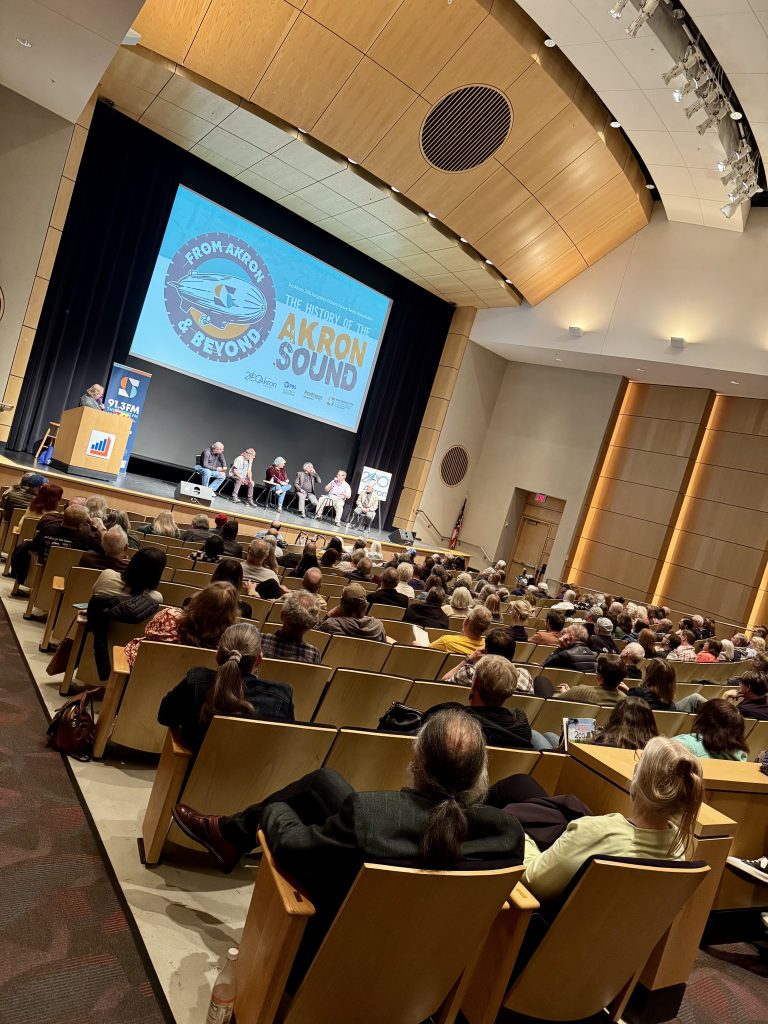

By Dave Swanson - Summit FM Contributor
Born in England and raised in Australia, the Gibb brothers certainly had music in their DNA. Between 1963 and 1966, they released two LPs and eleven singles, one of which, “Spicks and Specks,” reached #5 in Australia in 1966. They were all still teenagers. Robin, Maurice, and older brother Barry learned early on that their sibling harmonies were unique and would soon turn to gold. The trio returned to England, where everything seemed to be happening, to pursue a music career. They caught the eye of music mogul Robert Stigwood, who quickly signed them to a contract. Things began to move quickly, as they often did back then, and before long, the Gibbs, along with guitarist Vince Melouney and drummer Colin Petersen, were in the recording studio creating their first proper album.
Bee Gees 1st is a shining example of the possibilities of 1967: bursting with creativity, fully aware of the era's surroundings, and yet never succumbing to cliche. It stands as an excellent example of a (near) perfect pop LP. The Beatles’ influence cast a large shadow over the music, which worked to their advantage. So much so that the initial single “New York Mining Disaster 1931” was sent to radio stations with a blank label, creating a mystery about its origins and leading many to assume it was a new Beatles single. This resulted in heavy airplay and ultimately a number 14 hit in America. According to legend, even the Beatles thought it sounded like the Beatles, and the Bee Gees admit they were heavily influenced by the kids from Liverpool.
Written by Robin and Barry, it was but one piece of the story here. The album opens with “Turn of the Century,” which sets the tone for this slab of Pop Art Pop. Awash in the bright colors of the era, it showcases not only their stellar harmonies but also their songwriting. “Holiday” (#16 US) follows on the path, with a lush yet hazy approach. Songs like "Red Chair Fadeaway" and "In My Own Time" present a more dynamic style, not out of line with the Kinks’ style. “Every Christian Lion-Hearted Man” is a haunting, psychedelic ballad that is genuinely one of the lost classics of the era.
While some of the songs seem to be searching for their footing in the vast landscape, “To Love Somebody” (#17 US) stands out as a fully formed classic, worthy of the greats. It's no surprise that this song, another Robin & Barry composition, has been covered countless times over the decades by everyone from Nina Simone and Janis Joplin to Lady Gaga and Michael Bublé. Michael Bolton had a big hit with it in the 80s, but the definitive version is arguably the Flying Burrito Brothers' take, recorded in 1969 but left in the vaults until the 1980s. Gram Parsons and company transform the pop classic into an unparalleled country ballad.
Over the album's fourteen tracks, they cover a lot of ground, switching up styles but never straying from what was, at that time, their signature style of Beatles-inspired pop music. It was done without irony and without cliché, and early on, it turned heads. The band refined this approach over the next two albums, the equally great, if not better, “Horizontal” and “Idea,” before moving on to the highly ambitious 'Odessa,' which proved they could hold their own in more complex surroundings as well.
This entire era of the Bee Gees remains unfamiliar to many who call themselves fans, which is no surprise considering the Bee Gees have at least three different eras in their story. It would be another ten years before everyone in the world knew who the Bee Gees were with the disco classics they would deliver. Their story, like many in the history of pop music, is far more fascinating than most realize. That entire period, from the late 1960s to the early 1970s, is a treasure trove of great music from the Brothers Gibb. Dig in and enjoy!
By Dave Swanson - Summit FM Contributor
Born in Leeds, England, in 1979, Corinne Bailey Rae has long forged her own path. Her first proper gig with her band was in 1996. It would be another ten years before she finally released her debut LP. During that decade, she gained a great deal of insight into herself, her music, and the music industry. "There's an immense amount of snobbery in the British art scene," she told the Guardian upon the album's release, saying she sacrifices a few friendships in the quest for her art.
Recalling past heroines from Billie Holiday to Erykah Badu, Rae's style was a combination of her influences over the years, which included classic soul, jazz, and pop. On her debut, she mixes it all up into something familiar, yet fresh. Not only was she the vocalist, but she wrote, or co-wrote, all the songs. And, as if that weren't enough, she also contributes her talents on acoustic, electric, Spanish, and bass guitar as well as a variety of keyboards. Time has treated the album, now nearly 20 years old, quite kindly. Her beautiful voice was hard to deny or ignore.
The first single from the album, 'Like A Star,' introduced this fresh voice and broke into the UK Top 40, but it was the follow-up that would put her in the spotlight in her native England. 'Put Your Records On' was a huge hit, clocking in at #2 in the UK. The song was notable for its references to Bob Marley in the lyrics. It would also be her first inroad in the US as it gained airplay on a variety of radio stations, including pop, jazz, and R&B stations. It stayed on the Billboard 200 for the next year and a half. Two more singles would follow with lesser success.
The album certainly struck a chord at a time when her classic, yet contemporary, style of song seemed anything but fashionable. Her songs tend to recall her past while looking straight ahead to the future, saying that her songs are "about my internal world, my experiences, and relationships, stories I had or had heard." That debut album earned her some notable fans, including Herbie Hancock, Stevie Wonder, and Oprah, among others. It would go on to achieve gold and platinum status around the world, laying the groundwork for what has turned out to be a healthy and enjoyable career that continues to this day.
Join Akron 200 and The Summit FM for the next installment of the Forgotten History Forum Series presented by the FirstEnergy Foundation, with our exclusive media partner, PBS Western Reserve, on Tuesday, May 20, 2025 at 6:00 PM.
Brad Savage of The Summit FM moderates a discussion of Akron’s time in the spotlight of the indie/new wave/punk music world, circa 1978 to 1983. You’ll hear about it from the artists who were there! There was (and still is) a vibrant music community in Akron, OH! Beyond the success of Devo and The Pretenders, there were The Bizarros, Stiff Records, Rachel Sweet, Tin Huey, Unit 5 and many more.
Please note the venue and time change. This event will be held at the Akron-Summit County Public Library Main Auditorium (60 S High Street). Doors open at 5:30 PM, with the forum beginning at 6:00 PM, followed by a Q+A session.
Free Admission! CLICK HERE TO REGISTER
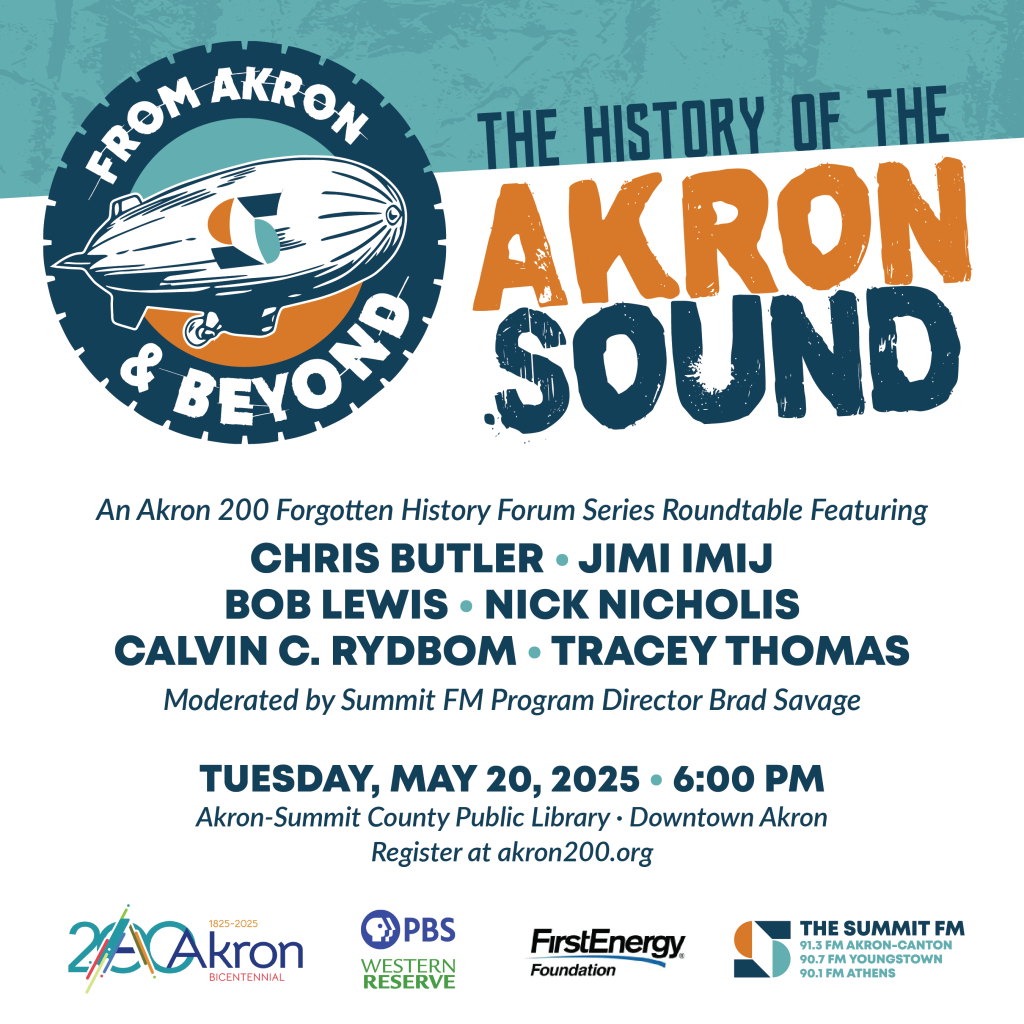
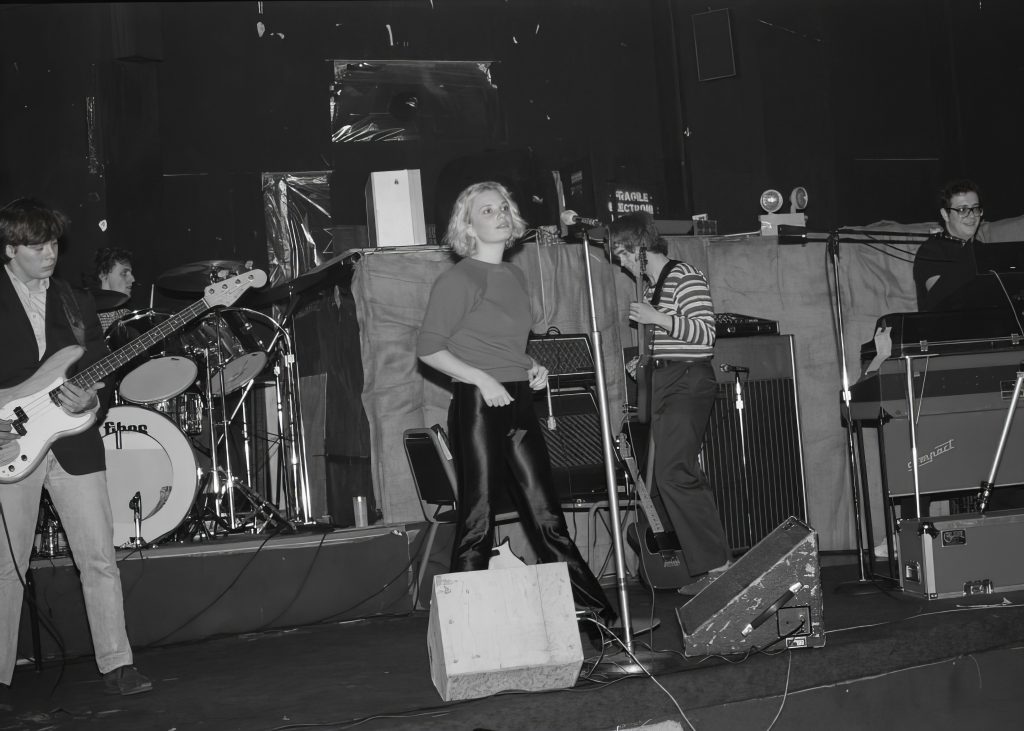
Famed Akron Sound favorite Unit 5, live at the Bank - Akron, OH
For nearly 30 years, The Summit FM has relied on annual funding from the Corporation for Public Broadcasting, accounting for approximately 8% of our operating budget. This support is vital to our ability to deliver the local music programming, emergency alerts, and community services you count on.
Recently, a federal executive order was issued to eliminate CPB funding for public media, including NPR, PBS, and over 1,500 local stations like ours. While the order's full impact is still unfolding and faces legal and congressional challenges, the potential loss of this funding would significantly affect The Summit FM and public media nationwide. Without CPB support, stations—especially in smaller or rural communities—may be forced to cut programming or even cease broadcasting entirely.
Your continued support has never been more critical as we navigate this uncertainty.
How You Can Help
Your donations have always been the backbone of The Summit FM. As we face external funding threats and unexpected technical challenges, your support ensures that we can continue to provide the distinctive local, regional, and international music and vital emergency information that our community depends on. Make a donation to the Summit today.
Voice Your Concerns:
- Contact your legislators. Urge them to protect public media funding.
- Sign the petition at ProtectMyPublicMedia.org.
Thank you for standing with us. Together, we will keep The Summit FM an independent voice, building community around compelling music and enlightened content.

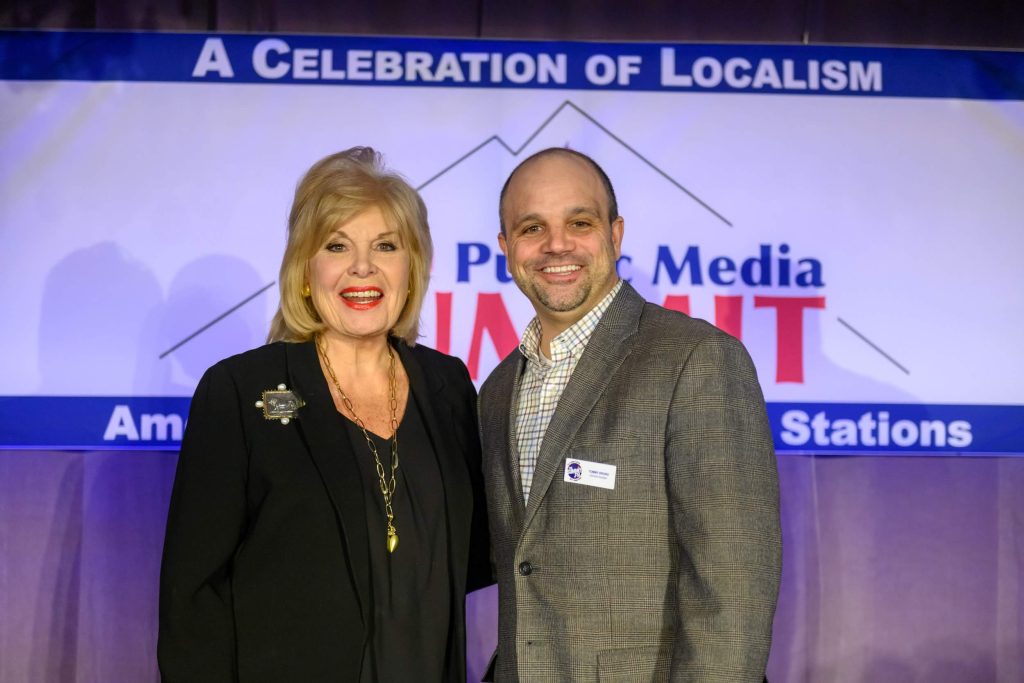
Summit FM General Manager Tommy Bruno with Patricia de Stacy Harrison, CEO of the Corporation for Public Broadcasting
By Dave Swanson - Summit FM Contributor
Released in May of 1966, the Beach Boys 'Pet Sounds' is the greatest album ever made.
Oh, do you want more details than that? Okay, sure.
Everything that would become "the 1960s" came to a boiling point in 1966. From the advent of a character named Bob Dylan at the start of the decade, through to the arrival of the Beatles on US soil in 1964, everything in pop music and pop culture was on course to a Technicolor explosion. From literature and films to fashion and music, it was youth-driven and highly aware of its surroundings. Messages coming in from overseas and the homeland, it was clear the 60s would not be a retread of the 50s.
For the sake of argument, it started with the Beats, the wild and woolly poets of the 1950s who saw life as an adventure of mind, body, and spirit. A new landscape was being painted within the pages of their books and words in their poetry, and those tuned in were looking for the new. The Beach Boys began as a modest enough proposal with three brothers who loved singing harmony, got together with a cousin and friend to form a rock and roll band. Equally inspired by Chuck Berry as they were by the vocals of the Four Freshmen, elder brother Brian Wilson would mold that combination into some of the greatest pop music ever created. Still teenagers, things began taking off. Long story short, they made a record, 'Surfin',' and their father, who was vaguely associated with the music business, helped get them a deal with Capitol Records.
The hits started coming. In their first four years, they landed 13 singles in the US Top 20, including 8 in the Top 10 and 2 number ones. They had a simple appeal, and yet with one listen, you knew this was not ordinary pop music. Brian was creating highly sophisticated melodies and arrangements for these deceptively simple songs. As with most artists, Brian became frustrated with the stagnation of the music and wanted to explore. Due to a breakdown from nervous exhaustion, Brian opted to stay home and not tour with the band. Instead, he spent his time creating in the studio, preparing tracks for the guys to work on when they returned home.
This peaked with 'California Girls,' a beautiful, surging pop song that proved Brian correct in time well spent in the studio. It was another hit. He kept working toward a new goal. Inspired by the ebb and flow of the Beatles 'Rubber Soul' album, Brian wanted to make an album that good. "It was definitely a challenge for me," Brian later said. "I saw every cut very artistically interesting and stimulating."
Working with the famous 'Wrecking Crew, a group of studio players in Los Angeles, he created the album 'Pet Sounds.' Released on May 16, 1966, it was not exactly like any previous Beach Boys album, or any album by any other artist for that matter. When the band first heard the material, they were surprised. None of the obvious cornerstones of the band were there. No songs about cars, surfin', or teenage revelry, instead, the lyrics were mature, introspective and much more adult. Brian had hooked up with lyricist Tony Asher for work on the album. Famously, the most vocal against the new approach was singer Mike Love who thought they should "stick to the formula," arguing the new songs to be too somber, and that people wouldn't get them. Though the singles from the album would both hit the Top 10, a brilliant take on the folk standard 'Sloop John B,' and the Brian classic "'Wouldn't It Be Nice,' the record company started to get nervous that there was nothing left for more singles and the album was dead in the water. In fact, they had such a sour view of the LP, instead of promoting it properly, they rushed to release 'The Best Of The Beach Boys' a mere two months later, trying to salvage BB sales for the year.
In the United Kingdom, however, a different tale was unfolding, as the music press and musician peers of the band were all lining up with praise for this modern masterpiece. From the Hollies to the Beatles and beyond, it was unanimous, the Beach Boys had raised the pop music stakes with 'Pet Sounds.' Paul McCartney has stated on several occasions that it was 'Pet Sounds' that inspired the Fab Four to dive headfirst into what would become 'Sgt. Pepper's Lonely Hearts Club Band,' which was released a little over a year later.
In between, in October 1966, to be exact, Brian wrote and recorded a single that not only smashed any doubt of his artistic promise but was also a massive hit. Though 'Good Vibrations' was not a part of 'Pet Sounds,' it was the arrow pointing to where he was headed, which is another story for another day! As for 'Pet Sounds' itself, it truly is a masterpiece.
Little wonder as to why. Kicking off with 'Wouldn't It Be Nice,' arguably one of Wilson's finest compositions, it wrapped the innocence of the early Beach Boys in adult idealism. 'You Still Believe In Me' is a plaintive ballad sung from the other side of teenagedom, while 'That's Not Me' was self-awareness 101. Not a little Deuce Coupe in sight as the loftier observations and checkpoints stood ground. 'Don't Talk, Put Your Head On My Shoulder' and 'I'm Waiting For The Day' are more examples of this new approach. 'Let's Go Away For Awhile' beams in as if from some island on another world. 'Here Today' and 'I Just Wasn't Made For These Times' are among the best songs Brian Wilson ever wrote, and 'God Only Knows' and 'Caroline, No' are among the best songs ever written, period!
Musically, the entire album is an adventure of sound. Sure, guitars, bass, drums, and keyboards are present, but let's not forget bass harmonica, violins, viola, cello, flutes, sax, vibraphone, timpani, and various other percussion (including a bicycle bell and a water jug). Then there are the highly sophisticated vocals, all arranged by Brian, who was only 23 years old at the time.
The songs, the arrangements, and the production, all by Wilson, were, and remain, a thing of wonder. Listening to this album countless times over the decades has yet to diminish its power. If I start to listen, I will always finish it. It is one of the greatest examples of pop music as pop art that could have only happened in 1966. In 1965, we didn't know enough, and by 1967, we knew too much, so to speak. It was that golden moment for those creatively ahead of the pack.
Now, here in 2025, it has become a common thought that this album is a landmark in pop music, with every accolade in the book being lobbed at it and sticking. This was not always the case. Aside from the aforementioned rush release of that 'Best Of' LP, Capitol tried to re-release 'Pet Sounds' in 1972 when it was included as a bonus LP, issued with the then-new LP 'Carl & The Passions - So Tough.' It truly wasn't until the CD age that critics and other musicians started to acknowledge what an amazing LP this was. Ultimately, it would replace 'Sgt Pepper' on the usual round of 'best of all time' lists for years to come, to this day, it often still finds a home atop that list.
So then, is it the greatest album ever made? Ask me now and I will say, of course it is. There is no other album quite like it. It possesses a magic all its own. Another day I may choose 'Face To Face' by the Kinks,' Revolver' by the Beatles, or perhaps 'Love's Forever Changes.' Then again, 'Country Life' by Roxy Music is great, ditto Eno - 'Here Come The Warm Jets.' I'm saying there is so much great music out there that so many people have yet to explore, what are you waiting for?!
It is with deep sadness that we share news of singer-songwriter Jill Sobule's sudden passing yesterday, Thursday, May 1st.
Many of you were present for what we now know was one of her final performances when she graced our studio on Tuesday, April 22nd. That afternoon, Jill brought her characteristic wit, warmth, and musical brilliance to our intimate gathering, uplifting us all.
Just ten days after sharing her gifts with our Summit community, Jill has tragically left us due to what reports describe as a "freak accident," resulting in a house fire. As we await further details from the ongoing investigation, we wanted to reach out to those who shared in that one-of-a-kind Studio C performance to honor the connection we all experienced with this remarkable artist.
“Jill Sobule was kind, funny, and open with her clever words and songs for over 30 years. What a gift to The Summit to have hosted one of her final interviews. It’s a reminder to be present and cherish every moment, take time to reflect, and do what you can to share kindness and connection," said Summit FM Program Director, Brad Savage. "Music reflects the human condition. It’s powerful and important. The music in our lives is how we understand the world around us. I’m glad Jill’s songs brought The Summit FM community closer together.”
The included photos capture moments from what was a truly memorable performance. We invite you to hold these memories close, along with Jill's family and friends, in your thoughts during this difficult time. Her music and spirit touched countless lives, including our Summit FM community, and will continue to resonate through her memorable catalog of songs.
To honor Jill's legacy, please tune in tonight, May 2nd, at 6:00 p.m. for a special tribute broadcast featuring the exclusive performance recorded here at The Summit FM last week.
With gratitude for the music,
The Summit FM Team



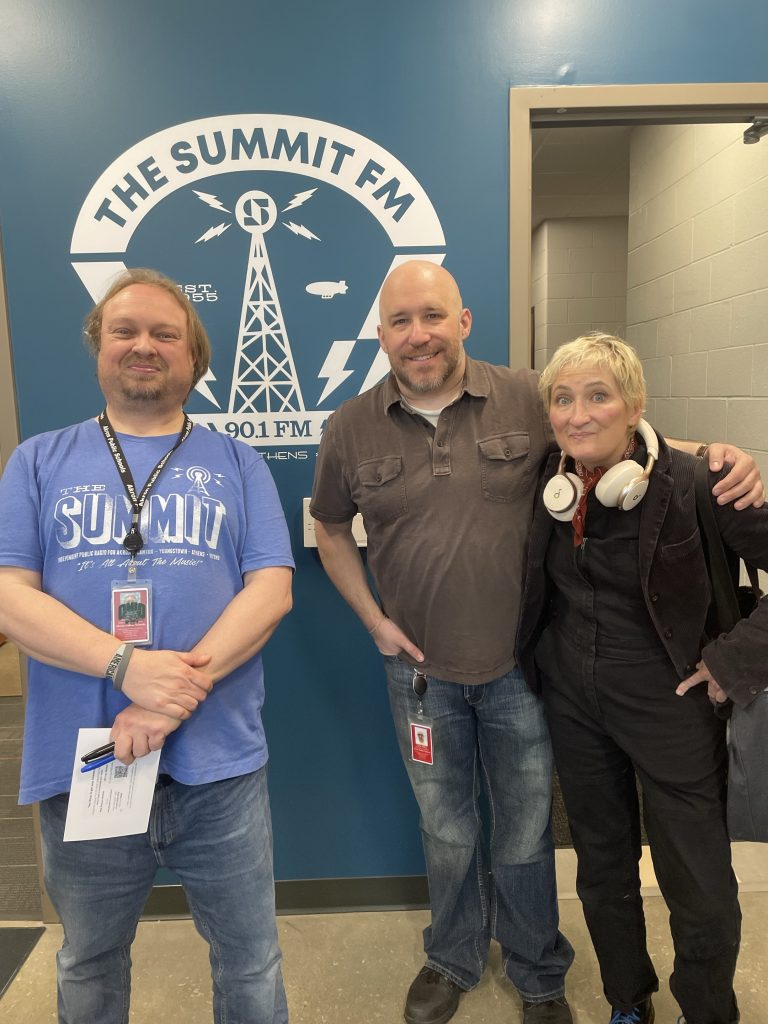
Released on April 25, 2025, Heart of Gold: The Songs of Neil Young is a new tribute album that reimagines Neil Young’s iconic catalog through the voices of contemporary artists.
Produced by Cinema Music Group and Killphonic Records, this compilation features a diverse lineup including Fiona Apple, Eddie Vedder, Brandi Carlile, Mumford & Sons, Sharon Van Etten, and The Lumineers. Each artist offers a unique interpretation, breathing new life into Young’s timeless songs.
The album opens with Brandi Carlile’s poignant rendition of “Philadelphia,” setting an introspective tone. Fiona Apple delivers a soulful version of the title track, “Heart of Gold,” while Mumford & Sons bring a fresh energy to “Harvest.”
Eddie Vedder’s live performance of “The Needle and the Damage Done” captures the raw emotion of the original, and Stephen Marley infuses “Old Man” with reggae rhythms. Other standout tracks include Sharon Van Etten’s “Here We Are in the Years” and The Doobie Brothers’ collaboration with Allison Russell on “Comes a Time.” Courtney Barnett’s take on “Lotta Love” and Chris Pierce’s rendition of “Southern Man” further showcase the album’s range and depth.
Beyond its artistic achievements, the album serves a philanthropic purpose. All proceeds benefit The Bridge School in Hillsborough, California, an institution co-founded by Neil Young and his late wife Pegi to support children with severe speech and physical disabilities.
Heart of Gold: The Songs of Neil Young is available in various formats, including a limited edition white 180-gram vinyl.This collection not only honors Young’s enduring legacy but also introduces his work to new audiences through the lens of today’s artists.
Track Listing:
- Brandi Carlile - “Philadelphia”
- Fiona Apple - “Heart of Gold”
- Mumford & Sons - “Harvest”
- Eddie Vedder - “Needle and The Damage Done”
- Courtney Barnett - “Lotta Love”
- Stephen Marley - “Old Man”
- Sharon Van Etten - “Here We Are In The Years”
- Lumineers - “Sugar Mountain”
- The Doobie Brothers with Allison Russell - “Comes A Time”
- Steve Earle - “Long May You Run”
- Rodney Crowell - “Mr. Soul”
- Chris Pierce - “Southern Man”
ORDER "HEART OF GOLD: THE SONGS OF NEIL YOUNG" HERE
By Dave Swanson - Summit FM Contributor
Some things fall apart and, in the process, allow new things to grow. Such was the case with pop sensations Fine Young Cannibals. After a run of success and some fantastic records, bassist David Steele and guitarist Andy Cox had left the Beat, also known as the English Beat in America, due to power pop kingpins from L.A., The Beat.
The Beat fused ska and pop with a punk energy and scored a handful of hits throughout three classic albums. Four of their first five singles hit the Top 10 in the UK, while songs like 'Twist and Crawl,' 'Tears of a Clown' and 'Save It for Later' would all become college radio favorites in the U.S.
By 1983, the band was falling apart, with leaders Dave Wakeling and Ranking Roger exiting to form General Public. Meanwhile, Cox and Steele assembled their own combo, along with vocalist Roland Gift, becoming Fine Young Cannibals. Taking an energetic dance-pop approach, they scored modest hits from their self-titled debut LP, released in 1985, with 'Johnny Come Home' and a cover of the Elvis classic 'Suspicious Minds.' FYC was off and running with an unmistakably fresh sound, perfect for the era.
It would be another few years before they released a follow-up, but that would be their shining moment. 'The Raw and the Cooked' was issued in January of 1989. The album was divided into the "raw" and the "cooked" motif for each side of the LP. A total of five songs were released as singles. 'I'm Not Satisfied,' 'I'm Not The Man I Used To Be,' 'Don't Look Back,' and 'Good Things' all scored hits in England, but it was 'She Drives Me Crazy' that would become a worldwide smash. It, along with 'Good Thing,' hit the number one spot on the US Billboard charts and carried the LP to the top. These were feel-good songs that truly connected with an audience, genuine pop music with roots winding back to Motown, 60s pop, and beyond, with just a hint of the ska they came from with the Beat. A cover of the Buzzcocks 'Ever Fallen In Love With' had previously been a part of the soundtrack to the 1987 film,' Something Wild,' which was also included.
FYC's take on pop music struck a definitive chord for the times. "The dance-music thing is like the punk of the Eighties," Cox told Rolling Stone, "or rock & roll in the Fifties. It seems to be the most vibrant part of modern music."
Part of that style in the underground at the time was the rise of house music. "I don't really like house music, because I find it quite inhuman," adds Gift. Cox described the approach to 'The Raw and the Cooked,' calling it "thirty years' worth of pop music in thirty minutes."
Their success in America even surprised the band, partly due to the multi-racial aspect of FYC. "In America, because of the size of the country, and there is a black economy, black people can make things for black people and sell them to black people," noted singer Roland Gift in a 1989 interview. "They can have a whole economy that doesn't even involve white people at all, and white people can do the same. The fears that stop people mixing are allowed to fester and grow."
'The Raw and the Cooked' went on to be nominated for a Grammy for 'Album of the Year' and did win a Brit Award for best album. It routinely pops up on 'Best albums of the 80s' lists and still receives airplay. It was all too much, however, as it was not only the band's sophomore effort but also their last. Pressure from the label and management to repeat the huge success of the LP toppled the band, which split in 1992.






